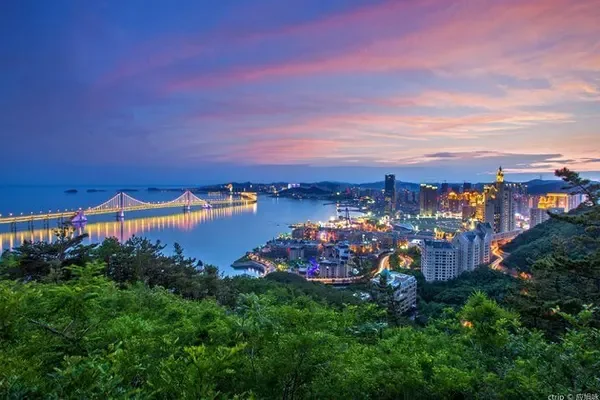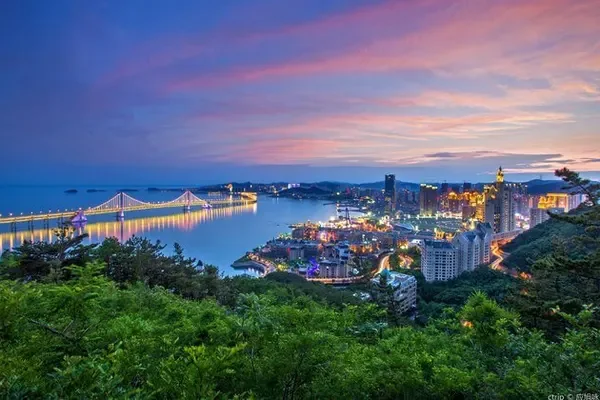Traveling to Qinghai, in addition to enjoying the beautiful scenery of the Qinghai-Tibet Plateau, visiting Tibetan monasteries and experiencing local culture is also an essential part of the itinerary, such as the famous Kumbum Monastery, Longwu Temple, Qutan Temple, Xiaqiong Temple, Youning Temple, Guanghui Temple, Quezang Temple, etc. In fact, Buddhism in Qinghai has long been integrated into the lives of local people. Ancient temples and famous temples are everywhere, especially in Tongren County, Huangnanzhou, which is known as the birthplace of Regong art. , there are countless temples here, many of which have a very long history. For example, the Wutunxia Temple that this article will share with you is one of them.
Wutunxia Temple is also known as "Senge Yangxia Temple", "Gedan Phuntso Qulin" in Tibetan, which means "good and perfect Dharma Island". It is located in Wutun Xiazhuang, 7 kilometers east of Longwu Town, Tongren County. On the east side, together with Wutunshang Temple, Nianduhu Temple, Gashari Temple, Guomari Temple, and Baoan's Woke Temple, it is also called "Longwu Sizhaizi Temple".
Although it is not as famous as Kumbum Temple and Longwu Temple, it is also a national key cultural relic protection unit, and according to historical records, Wutunxia Temple was built in 1385 and has a history of more than 600 years. The ancient temple is known as the birthplace of Regong art, so there are many cultural relics inside. There are Thangka masters, clay sculpture masters, and Duixiu masters in the temple. They are all made to order at Wutun Temple, and enjoy a high reputation throughout the Qinghai-Tibet Plateau.
According to the introduction of the monks in the temple, as early as the period of Chirebajin in Tubo, the Tibetan army stationed here in Xubian, and once built a small temple, which was called "Magon Niangwa" by later generations, and it was a Sakya monastery. In the Ming Dynasty, Dongke Dorje Gyatso, the sutra teacher of the first Xia Ricanggadan Gyatso, once expanded it and converted it to the Gelug Sect. In the middle of the 17th century, Zhige Ri'eba, a disciple of Gaden Gyatso, moved to Maoga Temple and merged with Magong Niangwa to form the current Wutunxia Temple.
Wutunxia Temple has a Dajing Hall, a Maitreya Hall, a Dharma Protector Hall, and a tea house, covering an area of about 80 mu. It is said that five hair relics of Sakyamuni Buddha invited from India are hidden in the temple, which are enshrined in the statue of Sakyamuni Buddha as the treasure of the town temple. In addition, there are more than 1,000 grains of monk relics, which show different phenomena such as fragrance overflowing during cremation. There are many Buddhist scriptures such as "Kanjur" and "Danjur" in the temple, with a total of more than 7,000 volumes. There are eight white pagodas outside the gate of the temple, named "Eight Pagodas of Liberation", all of which were donated by villagers in Wutun.
The Dajing hall in the temple was built in the 45th year of Emperor Kangxi of the Qing Dynasty (1706). The foundation is a square structure with a length and width of about 25 meters. The main statues enshrined include clay sculptures such as Master Adixia, Master Tsongkhapa, the first summer Canggadan Jiancuo, and White Tara.
There is a tall three-faced golden Buddha outside the gate of Wutunxia Temple. It is said that Gengden admired the master of Wutunxia Temple. It is the largest three-sided open-air Amitabha statue built on the western Qinghai-Tibet Plateau. From October 15th of the lunar calendar in 2010, Geng Deng admired the master to select the site for the three-faced Amitabha Buddha that he vowed to build, and held a foundation laying ceremony. Coral, pearls, agate, gold, silver, and precious stones were stored at the base of the main hall, representing prayer. And auspiciousness, bringing joy, auspiciousness, and blessings to the world. On the day of storage, there was an incredible auspicious phenomenon. Small white snow like lotus flowers fell from the sky, and local believers also sent auspicious white yak milk.
After Geng Deng admired the master's continuous efforts to practice, chant scriptures, and pray, all the disciples in the temple blessed him every day. It took 5 years, and finally the Buddha statue was completed in October 2015. This Amitabha Buddha statue is the largest open-air three-faced Buddha on the Qinghai-Tibet Plateau, and the shape of the Buddha Hall is second to none in the country. The style of the main hall is laid out in accordance with the comprehensive map of the Western Paradise.
The shape of the first-floor hall below the Three-faced Buddha is also rare in the country. The main hall is laid out according to the Western Paradise. The seated statue of Amitabha Buddha is enshrined in the middle, and the treasure is solemn. Surrounding the Buddha statue are enshrined Master Tsongkhapa, Manjusri Bodhisattva, White Tara and so on.
The hall on the second floor is 3.5 meters high and wide, with Sakyamuni Buddha in the middle, Maitreya Buddha and Tathagata Buddha on the left and right. Avalokitesvara, Manjusri, Ksitigarbha, Puxian Bodhisattva and many Buddha statues of the four famous Buddhist mountains are enshrined outside the hall.
The third floor hall is 3 meters high, and the center is dedicated to the God of Wealth and the God of Wealth. The highlight of this hall is the Thangka art, which is displayed to tourists in Thangka style.
At the top of the three-story hall is the majestic three-faced bronze statue of Amitabha Buddha, which is 19 meters high overall and 2.4 meters high. The Buddha statue is surrounded by gold foil with a gold content of 98%, which shines brightly in the sun.
The color of the whole temple is extremely rich, mainly composed of gold (Buddha statues, prayer flags, prayer wheels, etc.), white (walls, pagodas, etc.), red (monk robes, walls, decorations, etc.), and people wearing red monk robes The lama walks through the white alley, the color contrast is extremely strong, and the picture is unforgettable.
There are many landmark buildings in the temple, such as the Mahavira Hall, Maitreya Hall, Tsongkhapa Hall, Dragon King Hall, Thousand-Handed Avalokitesvara Hall, Vajrasattva Hall, etc., and the tall pyramid-shaped open-air Golden Buddha in the picture above is one of the most outstanding , the entire pagoda-shaped building is five stories high, and there are some Buddha statues on the lower four floors. The outside is a circular layout of prayer tubes, and the top is a huge open-air golden Buddha. I don’t remember the size of the Buddha statue clearly. (At that time, Dawa Naori, a famous painting monk in the temple, took us to visit and gave a detailed introduction), but the visual impact of the scene was extremely shocking.
Different from famous big temples such as Dazhao Temple and Kumbum Temple, we can hardly see tourists when we visit Wutunxia Temple. We can slowly experience the culture inside and communicate with the lamas inside to understand them. The monastery life, watching them draw Thangkas, make clay sculptures, pile embroidery, chanting scriptures, debating scriptures, etc. After obtaining their consent, they can also take pictures.
Perhaps the reputation of Wutunxia Temple is far inferior to Kumbum Monastery, Dazhao Temple, and even Longwu Temple not far away, but when we walk in it, we will be impressed by the tranquility and Tibetan characteristics of the temple. The most important thing is that there is no commercial atmosphere of famous temples such as Kumbum Monastery here. You can experience the original Tibetan Buddhist culture and appreciate the amazing Regong art works. This is definitely worth aftertaste. Unforgettable fun trip.


